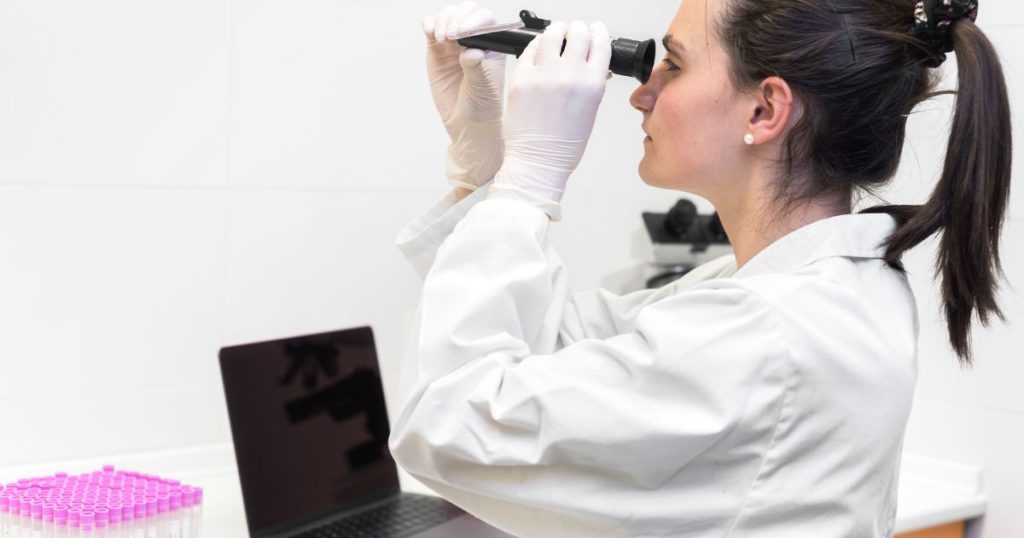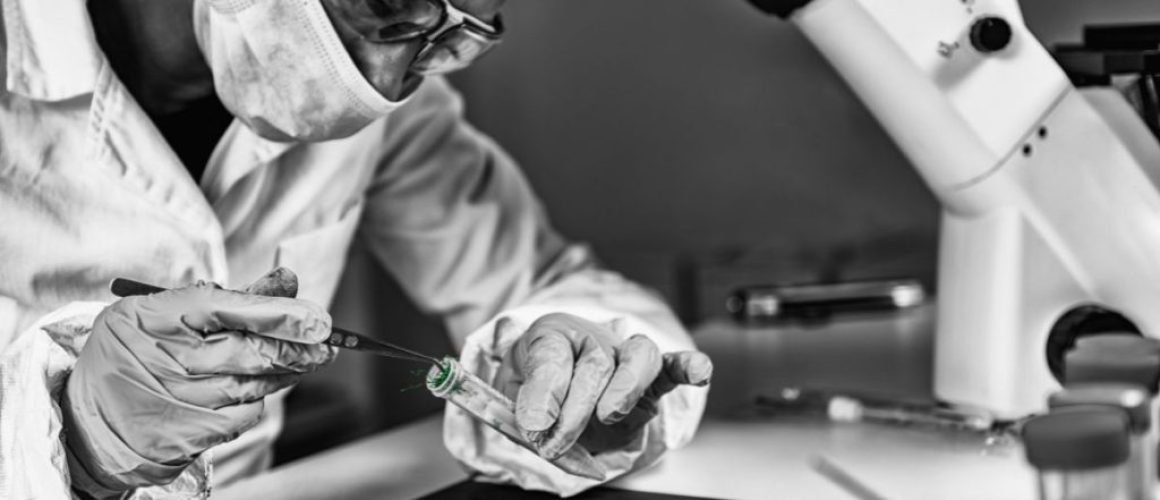The Role of DNA Analysis in Forensic Medicine
Table of Contents
The Role of DNA Analysis in Forensic Medicine
| Key Aspect | Description |
|---|---|
| Role of DNA Analysis | DNA analysis in forensic medicine provides concrete evidence that can significantly impact a case. It can identify a suspect, find familial relationships, or even generate a physical profile of a person. |
| DNA Profiling | DNA profiling creates a unique genetic ‘fingerprint’ by examining short tandem repeats (STRs) in an individual’s DNA. |
| Advancements in DNA Sequencing Technologies | Next-generation sequencing technologies have improved the accuracy and efficiency of forensic analysis. They can analyze smaller, more degraded samples than traditional methods. |
| Impact of Genomic Data | Genomic data can reveal details about a person’s ancestry, physical characteristics, and health risks. It is also used in forensic genealogy to trace relationships between individuals. |
| Challenges in DNA Analysis | DNA analysis faces challenges such as potential contamination of samples and complex interpretation of results, especially in cases where the DNA sample is mixed or complex. |
| DNA Analysis in Cold Cases | DNA analysis has been particularly impactful in solving ‘cold cases’. It has led to the resolution of cases that had been cold for years, even decades. |
| DNA Analysis in Exonerating the Innocent | DNA analysis plays a crucial role in exonerating the innocent. Numerous wrongful conviction cases have been overturned thanks to the power of DNA testing. |
Ever wondered, ‘What is the role of DNA analysis in forensic medicine?’ Well, it’s like the ultimate ‘whodunit’ detective, cracking cases by unmasking the tiniest, yet most telling culprits – our very own genetic blueprints!
Introduction
The role of DNA analysis in forensic medicine is a topic that has caught the attention of many people, especially with the rise of TV shows like CSI and Forensic Files. This method of investigation has proven to be a powerful tool in solving crime, identifying victims, and exonerating the innocent. But how does it work? Let’s delve into the fascinating world of DNA and its vital role in forensic medicine.
The ever-expanding role of DNA in forensic science is helping us achieve a level of justice and accuracy previously thought impossible.
What is the Study of Forensic Medicine?
Forensic medicine, also known as medical jurisprudence, is a branch of medicine that applies medical knowledge to legal issues. It’s a science that answers legal questions by applying medical facts.
This fascinating field is not just about dead bodies and crime scenes, as depicted in popular culture. It’s a multidisciplinary approach that combines aspects of pathology, anatomy, toxicology, and even psychiatry to investigate and understand not just the cause of death, but also the nature and extent of injuries, and the identification of individuals in legal cases.
Forensic medicine is also about helping the living. It plays a crucial role in cases of assault, child abuse, domestic violence, and elder neglect. Forensic medical professionals can provide crucial evidence that can aid in the prosecution of these cases, helping to ensure justice is served. So, while it might seem a bit macabre, the study of forensic medicine is a vital component of our legal and justice systems.
Forensic medicine, also known as medical jurisprudence, is a branch of medicine that applies medical knowledge to legal issues. It’s a science that answers legal questions by applying medical facts.
This fascinating field is not just about dead bodies and crime scenes, as depicted in popular culture. It’s a multidisciplinary approach that combines aspects of pathology, anatomy, toxicology, and even psychiatry to investigate and understand not just the cause of death, but also the nature and extent of injuries, and the identification of individuals in legal cases.
Forensic medicine is also about helping the living. It plays a crucial role in cases of assault, child abuse, domestic violence, and elder neglect. Forensic medical professionals can provide crucial evidence that can aid in the prosecution of these cases, helping to ensure justice is served. So, while it might seem a bit macabre, the study of forensic medicine is a vital component of our legal and justice systems.

The Role of DNA Analysis in Forensic Medicine
A significant component of forensic science, DNA analysis provides concrete evidence that can significantly impact a case. Through the application of forensic genomics, law enforcement agencies can process DNA evidence to identify a suspect, find familial relationships, or even generate a physical profile of a person.
DNA analysis in forensic medicine is like the ultimate puzzle-solving challenge. It’s all about finding that one piece of evidence that can crack a case wide open. Imagine having a single hair strand, a drop of blood, or a skin cell, and being able to extract from it a wealth of information about the person it came from. That’s the power of DNA analysis in forensic medicine.
But it’s not just about solving crimes. DNA analysis can also play a crucial role in identifying victims of mass disasters, reuniting families separated by conflict or disaster, and exonerating individuals who have been wrongfully convicted. It’s a tool of justice, wielded by experts in forensic medicine, that can bring closure to families and ensure the right individuals are held accountable.
| Forensic Aspect | Role of DNA |
|---|---|
| Crime Solving | Identifying suspects from DNA left at a crime scene |
| Victim Identification | Identifying unknown deceased individuals |
| Cold Cases | Providing new leads in unsolved cases |
| Exoneration | Proving the innocence of wrongly convicted individuals |
DNA Profiling and Its Importance
DNA profiling is an indispensable method in forensic genetics. By examining short tandem repeats (STRs) in an individual’s DNA, scientists can create a unique genetic ‘fingerprint’. No two people (except identical twins) share the same DNA, making this form of identification highly reliable.
Think of DNA profiling as the ultimate ID card. It’s like having a barcode that’s unique to you and only you. This ‘barcode’ can be used to link you to a place, a piece of evidence, or even a moment in time. It’s a powerful tool that, when used responsibly, can help ensure justice is served.
But DNA profiling isn’t just about catching the bad guys. It’s also a vital tool in paternity testing and genealogical research. It can help trace your ancestry, find long-lost relatives, or establish parental rights. In the hands of a skilled forensic scientist, DNA profiling can unlock stories, solve mysteries, and even change lives.
Common Techniques Used in Forensic Medicine
| Technique | Description |
|---|---|
| Autopsy | Examination of a body post-mortem to determine cause of death |
| Toxicology | Analysis of bodily fluids for presence of toxins and drugs |
| DNA Profiling | Creating a unique ‘fingerprint’ based on an individual’s DNA |
| Ballistics | Study of projectiles (like bullets) and their effects |
| Fingerprint Analysis | Identification based on unique patterns in fingerprints |
Advancements in DNA Sequencing Technologies
The advent of next-generation sequencing technologies has greatly improved the accuracy and efficiency of forensic analysis. These advanced tools can analyze smaller, more degraded samples than traditional methods, making them especially valuable when dealing with older evidence or samples that have been exposed to adverse conditions.
Next-generation sequencing technologies are like the high-definition TVs of the forensic world. They provide a clearer, more detailed view of the DNA in question, allowing for more precise and accurate analysis. This is particularly important in cases where the DNA sample is mixed or complex, as these technologies can help distinguish between different contributors to the sample.
Moreover, these advancements are not just improving the quality of forensic analysis, they’re also speeding up the process. Time is often of the essence in forensic investigations, and the ability to quickly generate accurate, reliable results can make a significant difference in a case. From helping to identify a suspect more quickly, to enabling faster processing of evidence, the impact of these technologies on the field of forensic medicine cannot be overstated.
The Impact of Genomic Data
Genomic data has profound implications for forensic medicine. The massive amounts of information contained in a person’s DNA can reveal details about their ancestry, physical characteristics, and health risks. This genomic analysis is also used in forensic genealogy, a relatively new field that uses shared DNA to trace relationships between individuals.
Forensic genealogy is like a high-tech family reunion, but with a twist. Instead of sharing old photos and family stories, forensic genealogists are sharing and comparing DNA sequences. This can help to identify unknown individuals, such as the victims of crimes or natural disasters, or even to track down the relatives of an unidentified suspect. It’s a powerful tool that’s helping to solve cases that might have otherwise remained mysteries.
But the impact of genomic data doesn’t stop there. It’s also being used to predict physical characteristics, such as eye and hair color, which can help to generate leads in cases where there are no known suspects. This approach, known as forensic phenotyping, is like creating a genetic mugshot. While it’s not as definitive as a DNA match, it can provide valuable clues that can help to steer an investigation in the right direction.
Challenges in DNA Analysis
Despite the incredible potential of DNA analysis, it’s not without its challenges. For instance, while DNA evidence can be compelling, it is also susceptible to contamination. Therefore, ensuring the integrity of the sample is paramount.
Another challenge lies in the interpretation of the results. DNA analysis isn’t always a matter of matching one sample to another. Sometimes, the evidence consists of a mixture of DNA from multiple individuals, which can be difficult to untangle. In such cases, sophisticated statistical methods are used to determine the likelihood that a particular individual’s DNA is present in the mixture. But these calculations can be complex and their results can be difficult to convey in a courtroom setting.
Furthermore, while the power of DNA analysis is undeniable, it’s important to remember that it’s just one tool in the forensic scientist’s toolbox. It can provide powerful evidence, but it doesn’t replace the need for thorough investigation and careful consideration of all the evidence. After all, DNA can tell you a lot, but it can’t tell you everything.
The Power of DNA in Cold Cases
One area where DNA analysis has been particularly impactful is in solving ‘cold cases’. Thanks to the longevity of DNA and the advancements in genomic technologies, many previously unsolvable cases have been cracked open.
In these instances, DNA evidence that was collected, preserved, but remained unanalyzed or inconclusive due to the limitations of older technologies, can now be re-examined. With the advent of more sensitive and precise techniques, even minute amounts of DNA can yield valuable information. This has led to the resolution of cases that had been cold for years, even decades, providing closure for families and justice for victims.
Moreover, the rise of public genealogy databases has also played a significant role in solving cold cases. By cross-referencing DNA from crime scenes with these databases, investigators can identify potential relatives of the suspect, which can lead them to the perpetrator. This technique, known as forensic genealogy, was notably used in the identification of the Golden State Killer, a case that had been cold for over 40 years.
How DNA Analysis Exonerates the Innocent
DNA analysis isn’t only used to convict the guilty; it also plays a crucial role in exonerating the innocent. Numerous wrongful conviction cases have been overturned thanks to the power of DNA testing, underscoring its importance in ensuring justice.
In many of these cases, individuals were convicted based on circumstantial evidence or unreliable eyewitness testimonies. However, with the advent of DNA testing, new light was shed on these cases, revealing that the genetic evidence did not match the convicted individuals. This has led to their exoneration and freedom, sometimes after many years of wrongful imprisonment.
Moreover, these cases have highlighted the need for reform in the criminal justice system. They’ve underscored the importance of preserving biological evidence and making post-conviction DNA testing more accessible. They’ve also raised awareness about the fallibility of certain types of evidence and the potential for human error or bias in the investigative and judicial processes. In this way, DNA analysis is not only a tool for achieving justice in individual cases, but also a driving force for systemic change.
Conclusion to The Role of DNA Analysis in Forensic Medicine
DNA analysis in forensic medicine is a powerful tool that has revolutionized the field of forensic science. As technology continues to advance, we can expect to see even more exciting developments in this area. Stay tuned for more updates on the fascinating world of forensic medicine!
Frequently Asked Questions
What is the role of DNA analysis in forensic medicine?
DNA analysis plays a crucial role in forensic medicine. It provides concrete evidence that can significantly impact a case. Through the application of forensic genomics, law enforcement agencies can process DNA evidence to identify a suspect, find familial relationships, or even generate a physical profile of a person.
How does DNA profiling work in forensic medicine?
DNA profiling is an indispensable method in forensic genetics. By examining short tandem repeats (STRs) in an individual’s DNA, scientists can create a unique genetic ‘fingerprint’. No two people (except identical twins) share the same DNA, making this form of identification highly reliable.
What are the advancements in DNA sequencing technologies in forensic medicine?
The advent of next-generation sequencing technologies has greatly improved the accuracy and efficiency of forensic analysis. These advanced tools can analyze smaller, more degraded samples than traditional methods, making them especially valuable when dealing with older evidence or samples that have been exposed to adverse conditions.
What is the impact of genomic data in forensic medicine?
Genomic data has profound implications for forensic medicine. The massive amounts of information contained in a person’s DNA can reveal details about their ancestry, physical characteristics, and health risks. This genomic analysis is also used in forensic genealogy, a relatively new field that uses shared DNA to trace relationships between individuals.
What are the challenges in DNA analysis in forensic medicine?
Despite the incredible potential of DNA analysis, it’s not without its challenges. For instance, while DNA evidence can be compelling, it is also susceptible to contamination. Therefore, ensuring the integrity of the sample is paramount.
How does DNA analysis help in solving cold cases in forensic medicine?
One area where DNA analysis has been particularly impactful is in solving ‘cold cases’. Thanks to the longevity of DNA and the advancements in genomic technologies, many previously unsolvable cases have been cracked open.
How does DNA analysis help in exonerating the innocent in forensic medicine?
DNA analysis isn’t only used to convict the guilty; it also plays a crucial role in exonerating the innocent. Numerous wrongful conviction cases have been overturned thanks to the power of DNA testing, underscoring its importance in ensuring justice.
Call to Action
Interested in learning more about forensic medicine? Check out my previous post on What is the Study of Forensic Medicine? and The Impact of Technology on Forensic Medicine and explore more topics in the Forensic Medicine category.
References
- Nayyer, S., & Jaiswal, A. K. (2023). DNA profiling in forensic investigation -A review. IP Int J Forensic Med Toxicol Sci, 8(1), 14-22.
Sean Schepers is a third-year Medical Technology student at Mahidol University with a passion for all things health and medicine. His journey into the world of medicine has led him to explore various fields. Sean's blog posts offer a unique perspective, combining his academic insights with personal experiences. When he's not studying or blogging, Sean enjoys keeping up with politics and planning his future career in medicine.
In addition to his studies, Sean serves as the chairman of the Rights, Liberties, and Welfare Committee, a role that reflects his commitment to advocacy and social justice. Beyond his academic pursuits, Sean offers tutoring services in English and Biology, further demonstrating his dedication to education and mentorship. His journey is one of continuous discovery, and he invites others to join him as he explores the dynamic and transformative world of medical technology.


